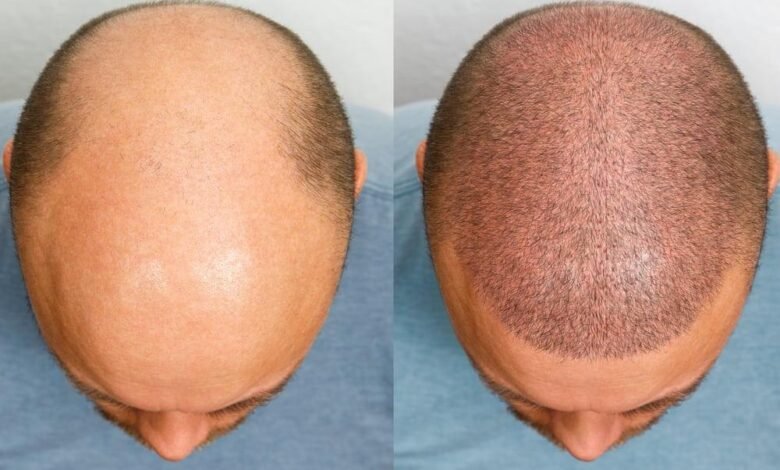
Breakthrough Hair Loss Treatment Shows Results in 20 Days
Scientists at National Taiwan University have created a groundbreaking hair loss treatment that showed amazing results. The treatment regrew hair in completely bald mice within 20 days. Their research appears in the journal Cell Metabolism and reveals how fat cells under the skin release specific fatty acids that wake up dormant hair follicle stem cells.
The team created a simple rub-on serum from natural fatty acids that could help people treat hair loss at home in the future. The treatment targets the skin’s natural processes during hair follicle regeneration, and lab tests showed visible changes in about three weeks [-3]. Lab experiments with human hair follicles have produced promising results, but scientists emphasize the need for human trials. This could become one of the best treatments for male pattern baldness and other types of hair loss, but researchers are carefully studying its limitations before moving to clinical testing.
Researchers develop serum that regrows hair in 20 days
Image Source: Istanbul Care
Scientists at National Taiwan University have engineered a breakthrough serum that accelerates hair regrowth through a unique mechanism with fat cells in the skin. Professor Sung-Jan Lin’s research team made this discovery by observing how minor skin irritation naturally triggers hair regeneration.
The research team conducted experiments by applying sodium dodecyl sulfate (SDS) to shaved mice, which created eczema-like inflammation. New hair growth emerged within 10-11 days. This growth happens because the irritant pushes immune cells into the skin’s fat layer, which signals fat cells to release fatty acids that wake up dormant hair follicles.
The team’s next breakthrough came from developing specialized serums. These contained natural monounsaturated fatty acids – oleic acid and palmitoleic acid – dissolved in alcohol. The compounds mimicked the regenerative signal without irritating the skin. Professor Lin tested an early version himself and reported: “I personally applied these fatty acids on my thighs for three weeks and found it promoted hair regrowth”.
The science behind this works through a complex process. Macrophages (white blood cells) enter dermal adipose tissue and trigger free fatty acid release from adipocytes through SAA3-dependent lipolysis. Hair follicle stem cells absorb these monounsaturated fatty acids through fatty acid translocase CD36, which starts the regeneration process.
The team has patented their formulation and plans to start human clinical trials soon.
How fatty acids stimulate hair follicle stem cells

Image Source: ResearchGate
This new hair loss treatment works through a metabolic pathway that shows how certain fatty acids wake up sleeping hair follicles at the cell level. When skin gets hurt or irritated, immune cells called macrophages move into the fat tissue under the skin. These cells interact with fat cells and make them release specific fats called monounsaturated fatty acids (MUFAs) through SAA3-dependent lipolysis.
The process works like this: Hair follicle stem cells (eHFSCs) absorb these released fatty acids – mainly oleic acid (C18:1) and palmitoleic acid (C16:1) – through a special protein called CD36. Scientists proved this absorption happens by using glowing versions of fatty acids that showed these stem cells actively taking in these compounds.
These fatty acids trigger an important change once they get inside the stem cells. They turn on a metabolic switch called PGC1-α that boosts the creation of cellular powerhouses and helps burn more fat. The cells then produce much more energy that lets them wake up from their dormant state and start growing new hair.
Lab tests showed we could skip the inflammation step completely by putting these specific fatty acids directly on the skin. These fats can get through the skin and wake up sleeping stem cells, which are a great way to get natural hair loss treatment without causing irritation. This discovery marks a big step forward compared to current treatments that either change hormones (finasteride) or need surgery.
Experts weigh in on limitations and next steps
Image Source: International Hair Authority
Medical experts are excited about the results but caution that big hurdles exist before this hair loss treatment reaches consumers. The biggest problem lies in the test subjects – mice have hair growth cycles lasting only about 3 weeks, while human scalp hair cycles take several years. Mouse and human hair follicles also have fundamental biological differences in their structure, function, and how they regulate growth.
One researcher tried the formula “on his own thighs” and saw positive results, but this kind of personal testing doesn’t hold up scientifically. Many treatments that show promise in mice don’t work in humans because of these biological differences.
The research shows that concentrated fatty acids might irritate the scalp or affect its microbiome balance. In spite of that, this natural approach could have fewer side effects than standard treatments like minoxidil, which often makes the scalp itch.
The team has already patented their hair regrowth serum. They now need to conduct thorough human clinical trials to find the right dosage, check long-term safety, and get regulatory approval. Other promising treatments are also in development, including PP405 molecule therapy at UCLA and non-hormonal ET-02, which doesn’t cause the sexual dysfunction side effects that come with finasteride.
Scientists at National Taiwan University have made one of the most important breakthroughs in hair loss treatment. They found that natural monounsaturated fatty acids can wake up dormant hair follicle stem cells. This approach is completely different from existing treatments. It works with the body’s natural regeneration instead of changing hormones or requiring surgery.
The research team found a vital signaling pathway that connects fat cells to hair follicles – something nobody knew about before. Their tests show these fatty acids turn on PGC1-α, which then boosts mitochondrial biogenesis to power follicle regeneration. On top of that, it doesn’t cause inflammation when applied to the skin, which is a huge improvement over previous experiments.
We have a long way to go, but we can build on this progress before this treatment reaches patients. The biggest problem is the difference between mouse and human hair follicles, though early tests on human follicles look promising. The team needs to run detailed clinical trials to find the right doses, check if it’s safe long-term, and get approval from regulators.
The team has secured patents for their formula, and this could be a game-changer for millions of people with hair loss. Lab tests showed visible results in just three weeks, which definitely makes this worth keeping an eye on. This natural fatty acid treatment could become an effective home solution as clinical trials move forward, giving people a new alternative to current hair loss treatments.






